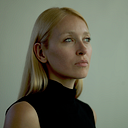From a Dedicated Space to VR at Home — How VR for Culture Is Distributed? (Part 1.)
Exploring Industry’s Insights to Make the Future of Immersion in Museums.
[In this new series of article, I’ll share precious insights from key actors of the immersion + museum field to understand the underlying foundations of it all.]
It is during the roundtable “Models for Financing and Operating Virtual Reality for Culture” organised at Museum Connections 2020 (listen to the podcast here), that Ana Brzezińska from Kaleidoscope Fund pointed a possible future for virtual reality in culture: “ We should imagine VR as a stand-alone medium in need of stand-alone institution treating VR as an art piece itself — something between a museum and a theatre. A specific space dedicated to immersive artworks.” This has been a great source of inspiration since then.
Something between a museum and a theatre. Ana Brzezińska
Virtual Reality is one of the fastest-growing markets across the globe. However, this is far away from being proof of a global adoption or, at least, common knowledge. At Museum Connections 2020, Paul Bouchard from Diversion Cinema rightly underlined that most of the cultural institutions heard about VR as a new tool to include in a museum but most of them haven’t tried it yet. A need for experimentation and guidance is still really necessary today (listen to the podcast here).
This is also the impression given by Chris Michaels (Director of Digital, Communications and Technology at the National Gallery in London) during the online meetup organised by Vastari on August 19th: “Navigating New Distribution Models For Virtual Reality Experiences”. He reminded us that access to technology goes beyond the equipment itself, and insisted on the fact that The National Gallery is still looking for a way to build the right conditions and environment for VR to happen and be normalised in a 15th-century art gallery.
Camille Lopato from Diversion Cinema explained that it is still difficult to have visitors using the VR headsets by themselves. The welcome team helping to install the headset, explain what it is and provide support if needed, is still required.
“90% of the audience welcomed in our VR Cinema are first-time VR users” Camille Lopato, Diversion Cinema
Despite the adoption gap between the users, museums keep testing and experimenting with VR — trying to find the right way to integrate it into their programmes.
More than the common ephemeral VR stations set in a corner or hanging from the ceiling, some museums started to properly invest in VR and decided to dedicate permanent exhibition spaces for VR. The best example is the Virtual Reality Cabinet of the Natural History Museum of Paris.
The museum opened its VR permanent exhibition room in 2017 as an opportunity to create new kind of experiences, but most of all, to be able to tell stories complex to explain in a text of linear version. During the same roundtable at Museum Connections, Stéphanie Targui, Head of Digital at the Natural History Museum of Paris, explained that their first VR exhibition explores the evolution of the living and brings the user into an immersive story. VR has been the best narrative tool to tell such a complex story. Both scientific and digital teams from the museum found VR as a very efficient tool to convey their message through poetic and immersive storytelling instead of following the classic documentary tone they used to have.
Good to know that only 1 year and a half after the launch of their permanent VR room, the NHM in Paris has reached their financial balance while they are only open 3 days per week during public holidays.
Today, more complex stories are looking for their right media to reach out to the audience with the mean of emotions and immersion. Despite the 5 VR stations available in the VR room, Stéphanie explained that the team is now looking for new spaces within its own walls to host more VR experiences.
“What hinders museums today from welcoming more VR experiences within their walls is the dynamics of the space,” said Chris Michaels in the webinar organised by Vastari. He reminded that during the Modigliani show, Tate offered a VR piece with 9 headsets in a room with a dedicated team of 3 to manage the space with a 45-minutes queue to access it.
To counterbalance the small number of visitors allowed the Gazelli Gallery, also invited on the webinar by Vastari, explained that they are now trying to give access to the VR headsets in the evening, on special hours with a special ticket. This creates a sense of exclusivity where the visitors can book in advance and enjoy the gallery (almost) by themselves.
Another option is the synchronised VR cinema offered at the Forum des Images in Paris every Saturday, in collaboration with Diversion Cinema. This is not generating high revenue but is still profitable. They offer 20 headphones and access to VR piece they have in their 360° pieces catalogue. It creates a weekly meeting for VR curious or VR lovers, and a space to showcase new productions.
The new stage of development goes towards installation design through immersive scenography with higher entrance tickets. It is what Saatchi Gallery did last year when they invited marshmallow laser feast to install their VR-based exhibition “We Live in an Ocean of Air” with a highly immersive physical scenography. The first goal of the Saatchi Gallery was to diversify its business model and attract a younger audience.
